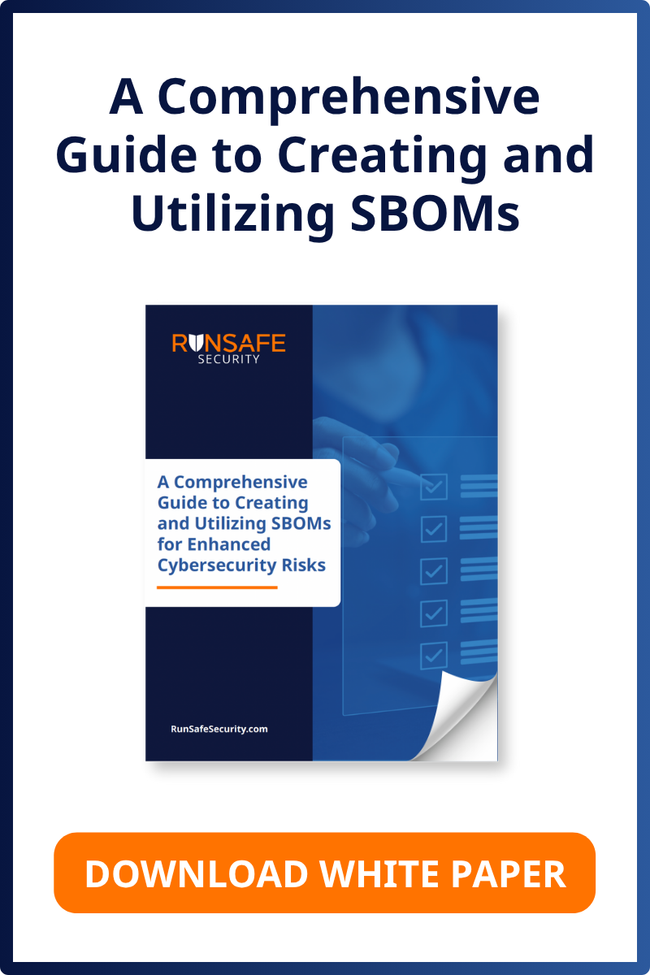This is a guest post by TrustInSoft.
TrustInSoft develops solutions for advanced software analysis that specialize in formal verification of C, C++ and Rust source code to ensure safety, security and reliability.
Key Takeaways:
- High code coverage is crucial for minimizing vulnerabilities and improving software reliability.
- Combining exhaustive static analysis with runtime exploit prevention offers a layered security strategy for 100% code coverage.
- TrustInSoft‘s tools and services offer exhaustive static analysis for early vulnerability detection, complemented by runtime protection tools like RunSafe Protect for comprehensive software security.
Introduction
Ensuring code reliability and security is paramount in software development today. Attackers actively look for vulnerabilities in code that can be exploited, leading to significant risks and potential damage. For example, in 2024, 768 CVEs were publicly reported as exploited in the wild for the first time.
Many security vendors work with independent testing institutions like AV-Test to validate the efficacy of their detection engines against malicious activity from bad actors that abuse known software vulnerabilities. The delta between the top vendors is typically only a few percentage points above 99% efficacy. However, though the top vendors achieve near 100% accuracy, bad actors continue to exploit known vulnerabilities within that small percentage gap. Early vulnerability detection using secure coding practices helps reduce the attack surface that bad actors often exploit.
Code coverage plays a vital role in mitigating these risks by measuring the extent to which source code is tested. This blog explores the role of code coverage in software security, the nuances of different code coverage metrics, and ways to address typical code coverage limitations by integrating exhaustive static analysis and runtime exploit prevention techniques to achieve resilient software that aligns with security standards and regulations.
Code Coverage: Minimizing Vulnerabilities

Code coverage is a metric that measures the degree to which source code has been tested. The goal of achieving high code coverage is to reduce the number of undetected bugs and improve overall software reliability. While developers strive to test as much code as possible, attaining perfect coverage is rarely achieved.
Understanding Code Coverage Metrics
Several key metrics provide different perspectives on testing thoroughness:
- Statement Coverage: Measures whether each statement in the code has been executed.
- Branch Coverage: Measures whether each branch of control structures (e.g., if-else statements) has been executed.
- Condition Coverage: Measures whether each condition in a decision has affected all possible outcomes.
- Path Coverage: Measures whether all possible paths through the code have been executed.
- Modified Condition/Decision Coverage (MC/DC): Used in safety-critical systems to ensure each condition independently affects the decision outcome.
The type of coverage will usually be chosen in the project depending on its defined quality requirements. While aiming for 100% code coverage is ideal, it’s essential to recognize that it may not be achievable due to time constraints and complexity. Achieving high coverage doesn’t guarantee the absence of vulnerabilities, highlighting the need for additional security measures when full coverage cannot be attained.
This is where TrustInSoft’s exhaustive static analysis solutions and RunSafe’s runtime exploit prevention technologies come into play, offering a more comprehensive approach to software security.
Benefits of High Code Coverage
Achieving high code coverage offers numerous benefits:
- Improved Software Quality and Reliability: Thoroughly tested code is less likely to contain bugs, leading to more reliable software.
- Early Error Detection: Identifying and fixing errors early in the development cycle reduces debugging costs and accelerates time to market.
- Reduced Maintenance Costs: High-quality, well-tested code requires less maintenance and fewer patches, reducing long-term costs.
- Compliance with Security Standards and Regulations: Many security standards and regulations require high code coverage as part of their compliance requirements.
Exhaustive Static Analysis for Early Vulnerability Detection
Static analysis involves evaluating code without the need for a target to run it on, allowing for the early identification of vulnerabilities and errors. Traditional static analysis tools using pattern-matching and rule-based scanning can identify potential issues, but they often produce false positives, slowing down the testing process and potentially overlooking critical vulnerabilities.
TrustInSoft Analyzer utilizes a different technique that focuses on the behavior of C/C++ code, providing a more exhaustive analysis that reduces false positives and ensures no vulnerabilities are overlooked.
Because the tool applies a formal methods approach internally, it can assert the absence of runtime errors and other critical software bugs. Besides the guarantee of finding all issues it searches for, the focus on the behavior means that TrustInSoft Analyzer keeps a trace of each reached part of the application and can produce a coverage report.
Runtime Exploit Prevention: Protecting Against Runtime Exploits
Runtime exploit prevention technologies protect applications by detecting and preventing attacks at runtime. Runtime protection is crucial because it addresses vulnerabilities that may not be discovered during the development phase without sufficient code coverage testing efforts. By monitoring application behavior and detecting anomalies, Runtime exploit prevention can prevent attackers from exploiting unforeseen weaknesses, ensuring the application remains secure even in the face of novel threats. RunSafe Security’s tools exemplify runtime exploit prevention, guarding against memory corruption using methods such as Load-time Function Randomization (LFR).
Runtime exploit prevention provides an additional layer of security against zero-day exploits and other sophisticated attacks that may bypass traditional testing methods. RunSafe’s solutions offer proactive runtime protection, complementing early vulnerability detection with exhaustive static analysis to create a comprehensive security posture.
Combining Exhaustive Static Analysis and Runtime Exploit Prevention
Integrating exhaustive static analysis and runtime exploit prevention creates a robust, layered defensive strategy. Static analysis using formal methods, like that offered by TrustInSoft Analyzer, focuses on early vulnerability detection, identifying potential issues before the code is ever executed. Where a hundred percent of code coverage is not attainable, runtime exploit prevention, such as RunSafe’s security measures, protects against runtime exploits by monitoring application behavior and preventing attacks in real-time.
These approaches are complementary, providing comprehensive protection throughout the software development lifecycle. By combining TrustInSoft Analyzer’s exhaustive static analysis with runtime protection tools like RunSafe, organizations can ensure their software is secure from development to even after deployment. This integrated approach ensures mathematically proven memory safety and regulatory compliance readiness. Combining these tools gives you assurance for all code covered through exhaustive code analysis with TrustInSoft Analyzer and a back up on unanalyzed code with RunSafe.
Conclusion
Achieving high code coverage is essential for developing reliable and secure software. Integrating exhaustive static analysis with runtime exploit prevention creates a comprehensive security strategy that protects against vulnerabilities at every stage of the software development lifecycle. Organizations should adopt a multi-faceted approach to security, combining tools like TrustInSoft Analyzer and runtime exploit prevention technologies like RunSafe to ensure robust and resilient software throughout the SDLC.
By prioritizing code coverage, leveraging exhaustive static analysis, and implementing runtime exploit prevention, organizations can deliver software that is not only functional but also secure and reliable through exhaustive code coverage on up to 100% of the code and runtime exploit mitigation for remaining code.
TrustInSoft’s solutions provide mathematically proven memory safety, ensuring compliance and reducing the risk of costly vulnerabilities. For enhanced runtime protection, consider RunSafe’s innovative solutions. Both TrustInSoft and RunSafe offer valuable tools for creating a secure software ecosystem, request a demo of TrustInSoft Analyzer or deploy RunSafe’s tools for the ultimate protection against attacks.




